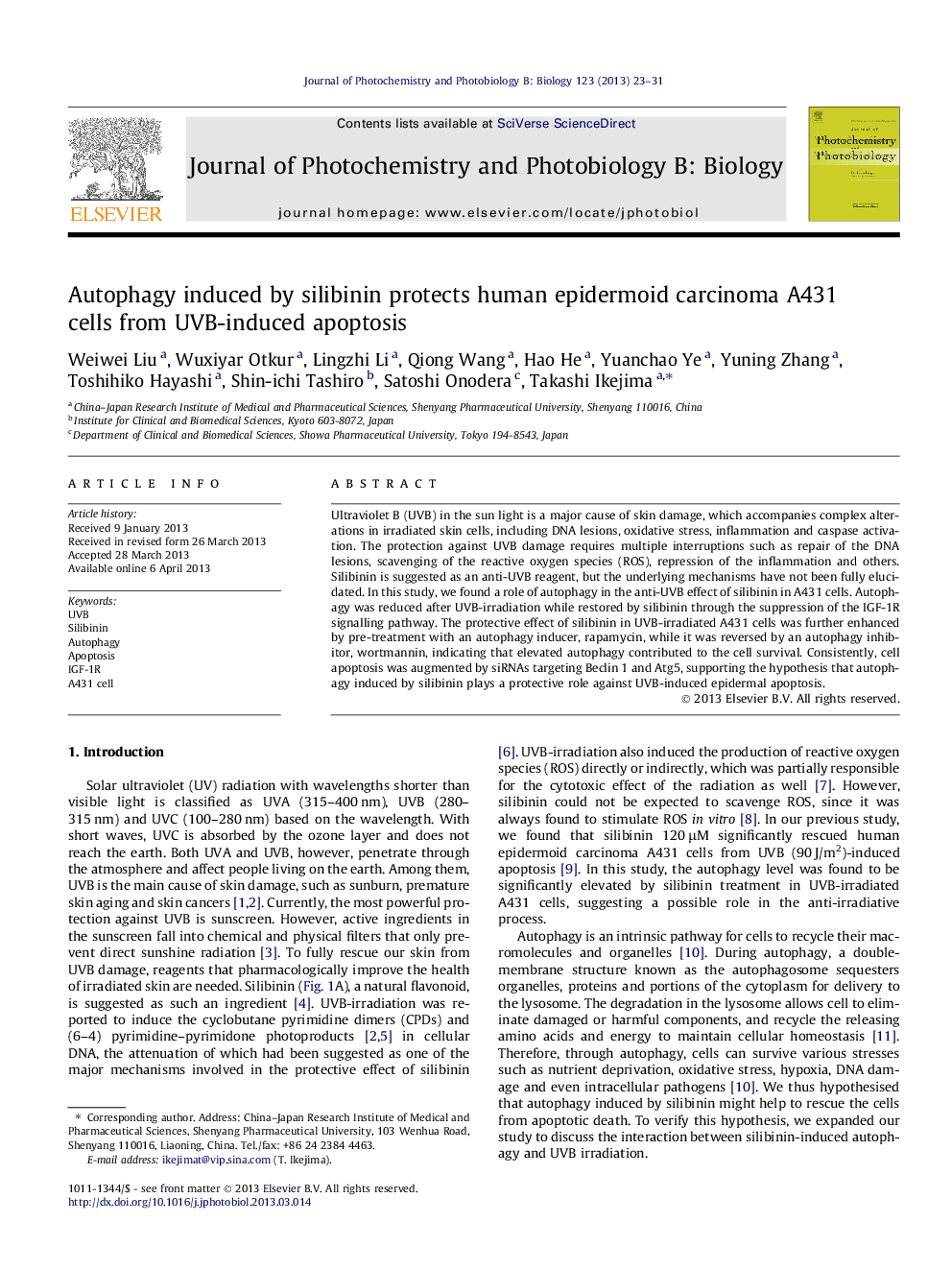| Article ID | Journal | Published Year | Pages | File Type |
|---|---|---|---|---|
| 30585 | Journal of Photochemistry and Photobiology B: Biology | 2013 | 9 Pages |
•Silibinin-induced autophagy protects A431 cells from apoptosis induced by UVB.•Activation of the IGF-1R-Akt axis by UVB results in the reduction of autophagy.•Silencing of the autophagy-related molecules reverses silibinin’s protection.
Ultraviolet B (UVB) in the sun light is a major cause of skin damage, which accompanies complex alterations in irradiated skin cells, including DNA lesions, oxidative stress, inflammation and caspase activation. The protection against UVB damage requires multiple interruptions such as repair of the DNA lesions, scavenging of the reactive oxygen species (ROS), repression of the inflammation and others. Silibinin is suggested as an anti-UVB reagent, but the underlying mechanisms have not been fully elucidated. In this study, we found a role of autophagy in the anti-UVB effect of silibinin in A431 cells. Autophagy was reduced after UVB-irradiation while restored by silibinin through the suppression of the IGF-1R signalling pathway. The protective effect of silibinin in UVB-irradiated A431 cells was further enhanced by pre-treatment with an autophagy inducer, rapamycin, while it was reversed by an autophagy inhibitor, wortmannin, indicating that elevated autophagy contributed to the cell survival. Consistently, cell apoptosis was augmented by siRNAs targeting Beclin 1 and Atg5, supporting the hypothesis that autophagy induced by silibinin plays a protective role against UVB-induced epidermal apoptosis.
Graphical abstractFigure optionsDownload full-size imageDownload as PowerPoint slide
